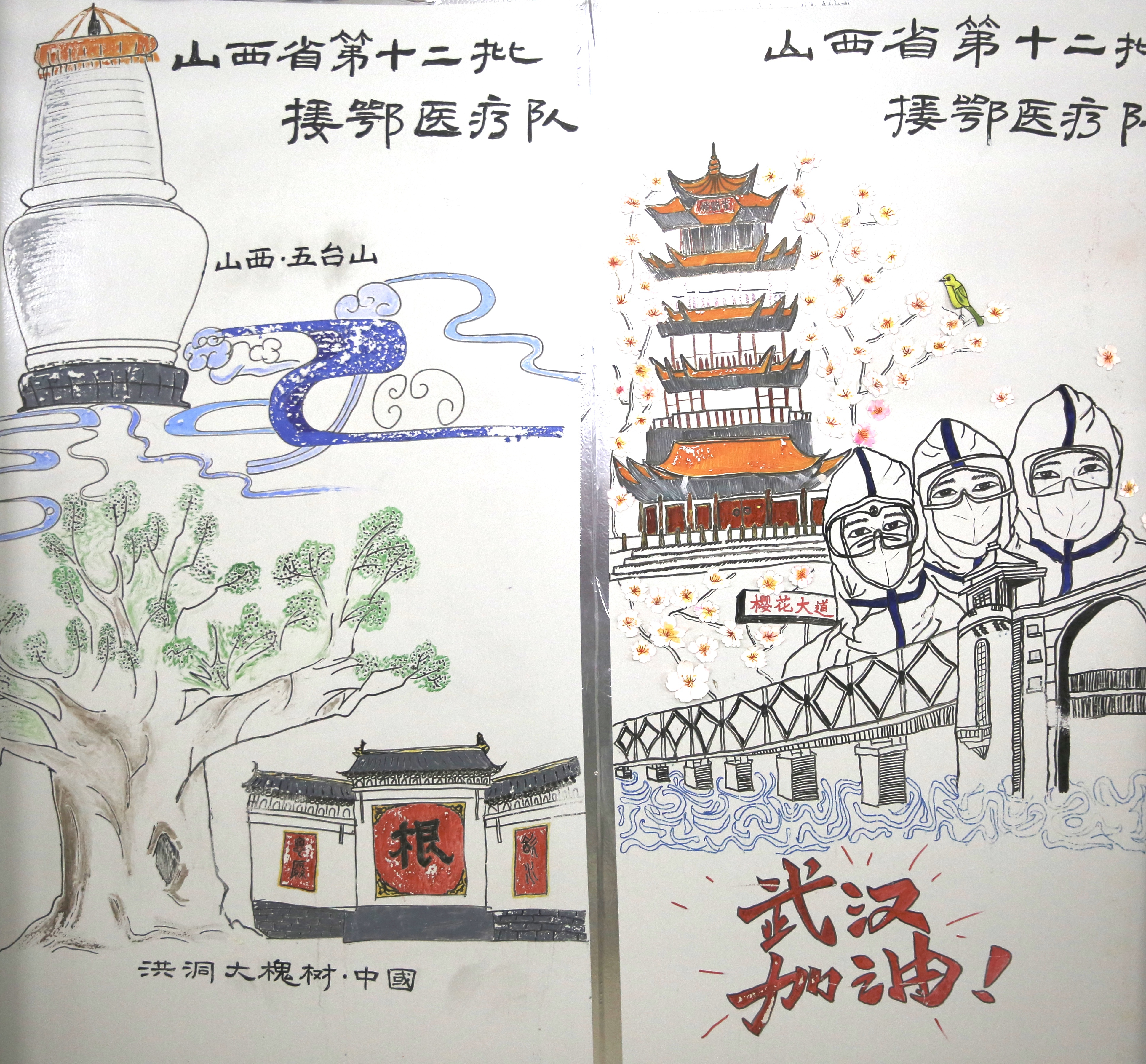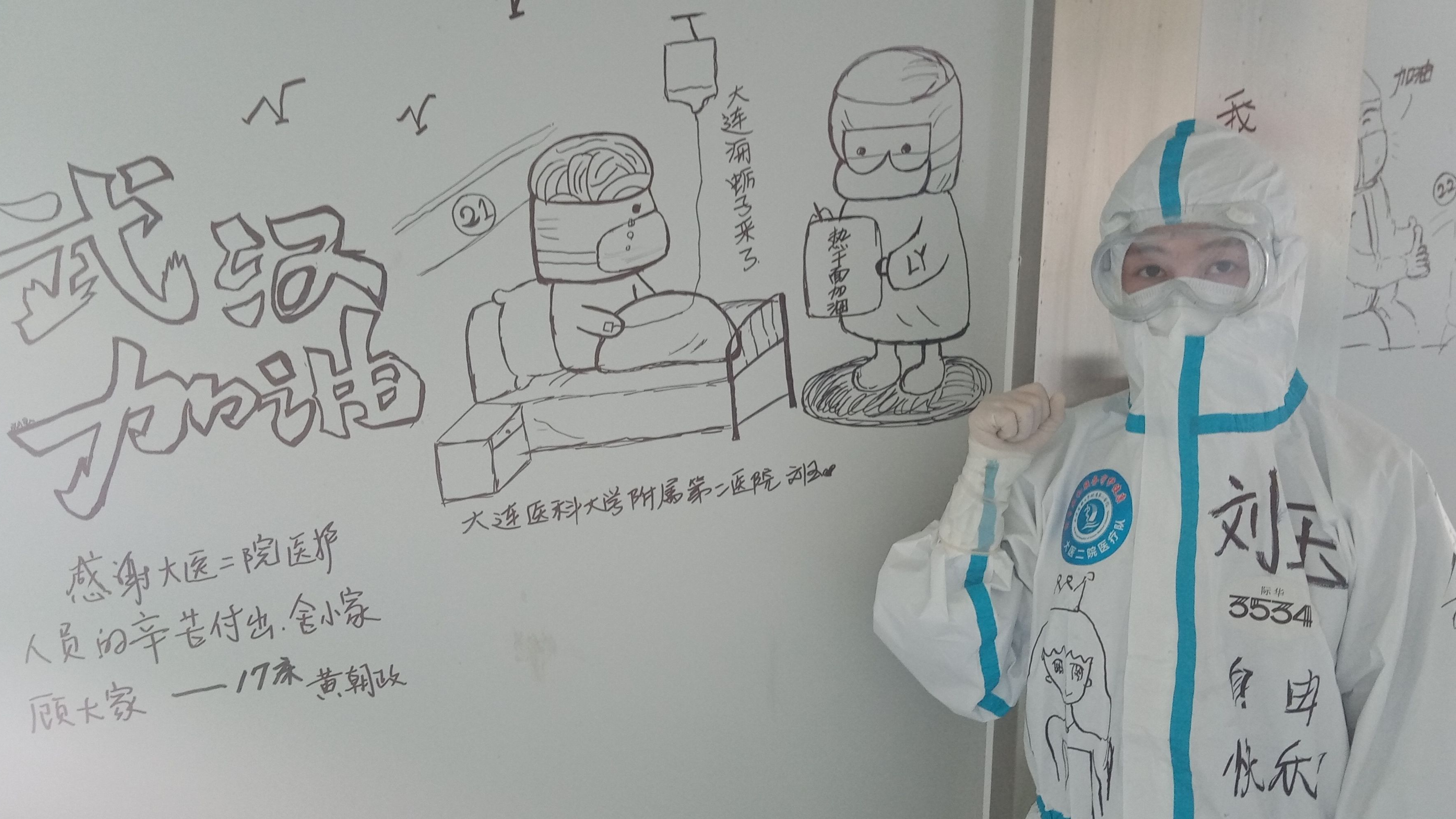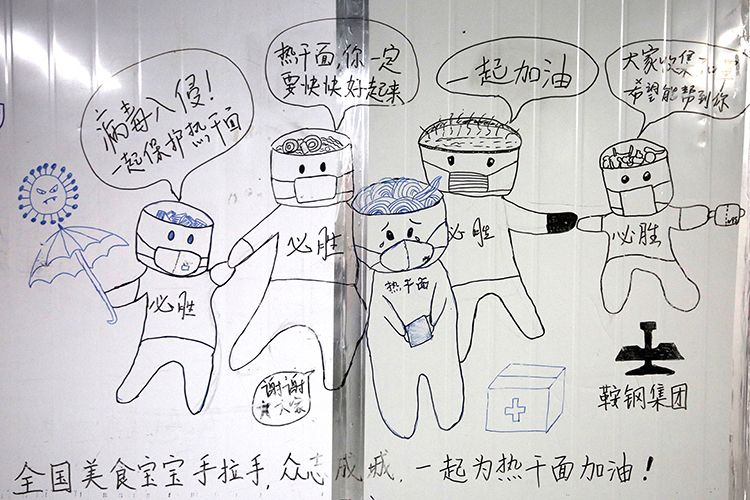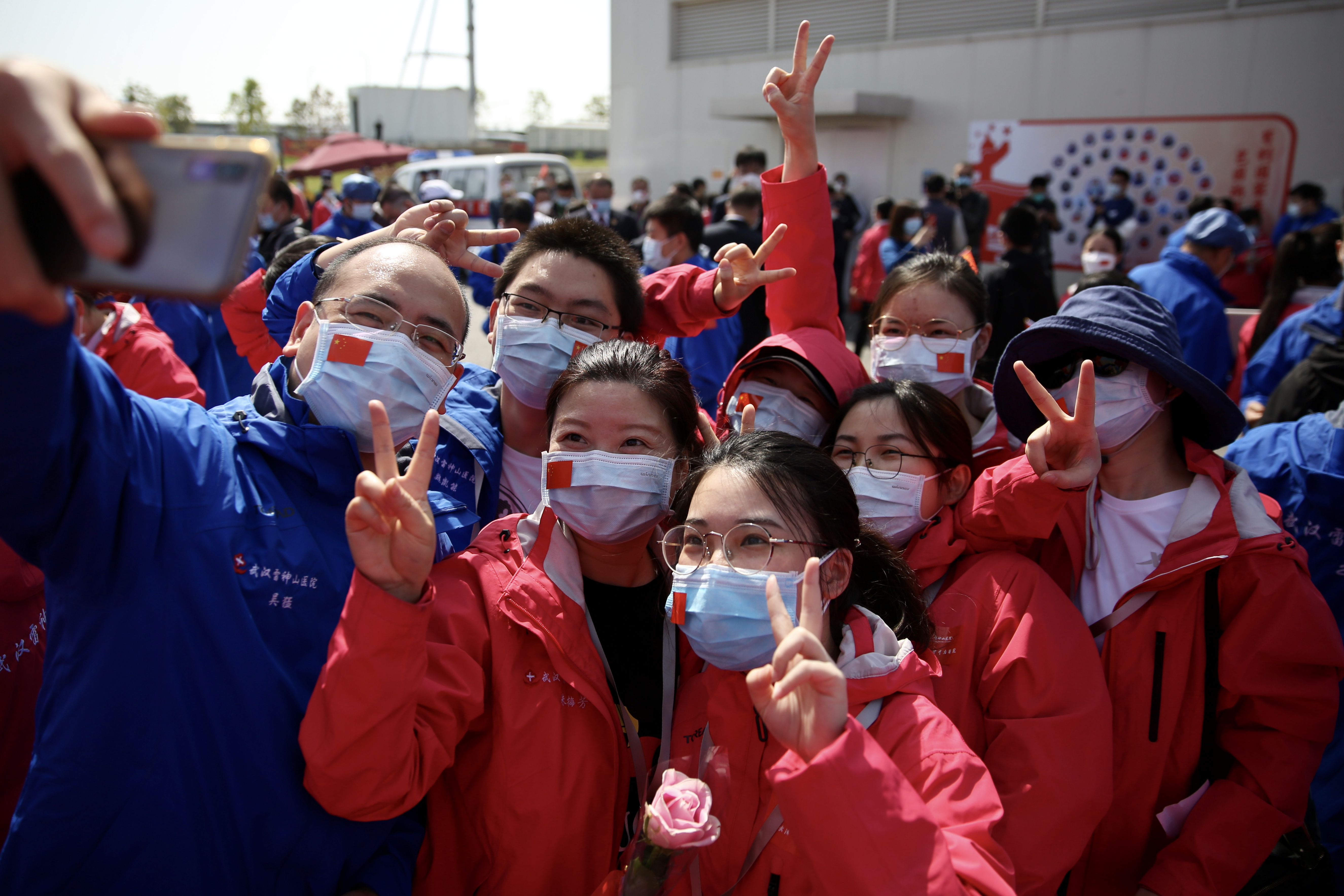With the temporary Leishenshan Hospital in Wuhan announcing its closure on Wednesday after its last four COVID-19 patients were transferred from its intensive care unit to Zhongnan Hospital of Wuhan University for further treatment, many memories of battling the epidemic stayed there.
Those memories are also cartoons made by medical workers on the wall of a corridor in the hospital. Now, with the hospital's closure, those painted walls depicting the daily life in the hospital amid the outbreak will be brought to and kept by a local museum.

Mt. Wutai (L), a signature scenic spot in north China's Shanxi Province, painted next to Wuhan's Yellow Crane Tower, Wuhan Yangtze River Bridge and Cherry Blossoms Avenue with medics from Shanxi are on a cartoon painted in the Leishenshan Hospital in Wuhan, central China's Hubei Province. /Beijing News
Mt. Wutai (L), a signature scenic spot in north China's Shanxi Province, painted next to Wuhan's Yellow Crane Tower, Wuhan Yangtze River Bridge and Cherry Blossoms Avenue with medics from Shanxi are on a cartoon painted in the Leishenshan Hospital in Wuhan, central China's Hubei Province. /Beijing News
And those encouraging stories and the strong will of medical workers and patients fighting the epidemic will be shown to the public in the future and passed on to the next generation, said an employee from the hospital.
Liu Yu, a nurse at Leishenshan Hospital, was one of the first artists who started making the cartoons on the wall. She came to the hospital as a member of a medical team from northeast China's Liaoning Province on February 8, to relieve the local shortage of personnel.
Feeling stressed from the highly intensive work, Liu recalled the time when she was at school and drew a lot encouraging paintings on the blackboard to cheer her classmates. Soon, she came up with the idea of painting cartoons on the white walls of the hospital's corridor as a way to relieve tension and cheer the patients and her colleagues.

Liu Yu, one of the first artists who began drawing cartoons on the corridor's wall in Leishenshan Hospital, posing with her first painting. /Beijing News
Liu Yu, one of the first artists who began drawing cartoons on the corridor's wall in Leishenshan Hospital, posing with her first painting. /Beijing News
The cartoon wall were located in a special passage for medics, because they were located on the way to the isolation wards and uncontaminated area.
Liu's first cartoon featured a personified oyster, a signature food from her hometown Dalian City, cheering up a bowl of hot-dry noodles, an iconic Wuhan's delicacy. The drawing had the message "stay strong" next to it.
Her painting has attracted a lot of attention from her colleagues and soon other people began to draw on the wall, sending encouraging messages.

"Get well soon, hot-dry noodles!" food from different places in China cheer up Wuhan's famous hot-dry noodles. /Beijing News
"Get well soon, hot-dry noodles!" food from different places in China cheer up Wuhan's famous hot-dry noodles. /Beijing News
Gradually, the 200-meter-long white came alive with local signature dishes and landmarks from different parts of China, from Shanghai's steamed dumplings to Sino-Korean Friendship Bridge in northeast China's Dandong City, as medical teams from across the country left a support message in the hospital.
Sometimes, she gave the marker to patients and encourage them to write down their thoughts and wishes.

A COVID-19 patient writing in the cartoon wall. /Beijing News
A COVID-19 patient writing in the cartoon wall. /Beijing News
Despite the heavy workload in the hospital, Liu said she never shed a tear. But she found it difficult to hold back when she would considerate and nice patients.
"Patients in Wuhan are really grateful. For example, they said thank you sincerely every time even when you just took their temperatures," she told Beijing News.
With more and more patients gradually recovering from the disease and being discharged from the hospital, she felt her duty was fulfilled. At the same time, she felt a little bit sad, because she missed these patients whom she had spent so many weeks.
The cartoon wall will be in their memories, and their stories will be passed on to generations.

Medical workers took selfies together during the closure ceremony of Leishenshan Hospital on April 15, 2020. /Beijing News
Medical workers took selfies together during the closure ceremony of Leishenshan Hospital on April 15, 2020. /Beijing News
Over 3,000 medical staff from 16 medical teams from across the country worked in Leishenshan in its 67 days of operation. At the peak of the epidemic, more than 40,000 medics from all over the country came to help Wuhan.
With a bed capacity of 1,600, Leishenshan Hospital was one of the two temporary hospitals built in a record time of less than two weeks. It welcomed its first batch of patients in early February.
The hospital has received a total of 2,011 COVID-19 patients since it was put into use to treat patients with severe symptoms, in the end 1,900 of them recovered and were discharged from the hospital, said Wang Xinghuan, president of the hospital.